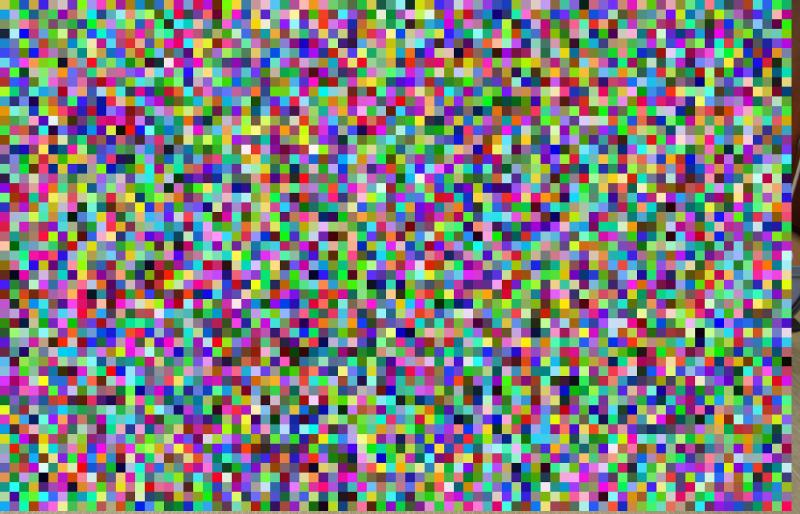本节中, 我们主要考虑PPT时间内的随机算法的去随机化, 当问题是判定问题时, 能被这样求解的问题即为$\mathbf{BPP}$问题.
枚举
枚举是相当简单的, 对于$L\in\mathbf{BPP}$的一个PPT算法$\mathcal A$, $\mathcal A(x)$其用到的随机比特数必然是$\operatorname{poly}(|x|)$, 因此, 我们可以用一个确定性算法来判定$L$, 该算法
- 枚举这$2^{\operatorname{poly}(|x|)}$个随机比特$r\in{0,1}^{\operatorname{poly}(|x|)}$, 计算$\mathcal A(x;r)$
- 统计满足$\mathcal A(x;r)=1$的$r$所占的比例, 如果达到$\mathcal A$要求的输出$1$的阈值, 则输出$1$, 否则输出$0$.
显然, 上述算法能够正确判定$L$, 而其运行时间是$O(2^{\operatorname{poly}(|x|)})$, 因此我们可以证明$\mathbf{BPP}\in \mathbf{EXP}$, 即
定理
$\mathbf{BPP}\in \mathbf{EXP}$.
一个比较惊人的事实是, 我们目前无法证明$\mathbf{BPP}$和$\mathbf{NP}$的关系, $\mathbf{BPP}\subsetneq \mathbf{NP}$, $\mathbf{NP}\subsetneq \mathbf{BPP}$或者$\mathbf{BPP}=\mathbf{NP}$都是可能的.
非一致性
我们可以证明$\mathbf{BPP}\in \mathbf{P}_{/\operatorname{poly}}$, 即可以用一个多项式大小的电路族来判定任意$\mathbf{BPP}$问题. 证明的方式也很简单: 只需要证明对于每个长度的输入, 都有一个$L\in\mathbf{BPP}$的某个算法$\mathcal A$中用到的随机串$r$, 满足$\mathcal A(x;r)=1\iff x\in L$. 如此, 就可以把这个$r$作为advice.
具体可以参考文章Averaging Argument.
非确定性
虽然$\mathbf{BPP}$和$\mathbf{NP}$的关系是未知的, 但是我们可以证明$\mathbf{RP}\in\mathbf{NP}$.
对于$L\in\mathbf{RP}$问题来说, 可以构造一个算法$\mathcal A$判定$L$, 且该算法没有$0$-sided error, 即永不可能在$x\notin L$时输出$1$. 那么, 对于任意$y\in L$, 我们认为$r$是$y$的witness, 如果$\mathcal A(y;r)=1$. 这样一来, 任意$x\notin L$就每一任何witness, 方可证明:
定理
$\mathbf{RP}\in\mathbf{NP}$.
对于$\mathbf{BPP}$的讨论会复杂一些. 如果读者熟悉计算复杂性的话, 我们可以证明$\mathbf{BPP}\in\Sigma_2\cap \Pi_2$. $\Sigma_2$和$\Pi_2$是落在$\mathbf{PH}$第二层的复杂性类, 前者包括所有形如$\exists y\forall z.P(x,y,z)$的论断, 后者包括所有$\forall y\exists z.P(x,,z)$的论断.
定理
$\mathbf{BPP}\in\Sigma_2\cap \Pi_2$.
该定理的证明思路是这样的, 我们将任意$L\in\mathbf{BPP}$用某个出错率低于$2^{-n}$的算法$\mathcal A$来表示, 假设其使用$m$个数基比特, 定义
$$
A_x={r:\mathcal A(x;r)=1}\subset \lbrace 0,1\rbrace^m
$$
那么对于$x\in L$, 其$A_x$就比较大, 我们定义$A_x$的偏移
$$
A_{x;s}={r\oplus s:r\in A_x}\subset \lbrace 0,1\rbrace^m
$$
这样, 选取少数个$s_1,\cdots, s_m$, 我们就有把握使得$A_{x;s_1}\cup \cdots\cup A_{x;s_m}=\lbrace 0,1\rbrace^m$. 对于$x\neq L$, 由于其每个$A_{x;s}$都很小, 我们有把我认为无论我们如何选取$s_1,\cdots, s_m$, 都有$A_{x;s_1}\cup \cdots\cup A_{x;s_m}=\lbrace 0,1\rbrace^m\subsetneq \lbrace 0,1\rbrace^m$. 严格来说, 我们需要将上述说法转换为QBF的形式, 即, 我们要证明的是
$$
\begin{align}
\begin{array}{rlrl}
x \in L & \Rightarrow \exists s_{1}, s_{2}, \ldots, s_{m} \in{0,1}^{m} \forall r \in{0,1}^{m}. r \in \bigcup_{i=1}^{m}A_{x;s_i} \newline
& \Leftrightarrow \exists s_{1}, s_{2}, \ldots, s_{m} \in{0,1}^{m} \forall r \in{0,1}^{m}. \bigvee_{i=1}^{m}\left(A\left(x ; r \oplus s_{i}\right)=1\right) \newline
x \notin L & \Rightarrow \forall s_{1}, s_{2}, \ldots, s_{m} \in{0,1}^{m} \exists r \in{0,1}^{m}. r \notin \bigcup_{i=1}^{m}A_{x;s_i} \newline
& \Leftrightarrow \forall s_{1}, s_{2}, \ldots, s_{m} \in{0,1}^{m} \exists r \in{0,1}^{m}. \neg \bigvee_{i=1}^{m}\left(A\left(x ; r \oplus s_{i}\right)=1\right)
\end{array}
\end{align}
$$
我们首先证明第二个论断. 当$s_1,\cdots, s_m$固定的时候, 随机选取$R$, 我们计算$R \in \bigcup_{i=1}^{m}A_{x;s_i}$的概率
$$
\begin{aligned}
\operatorname{Pr}\left[R \in \bigcup_{i}A_{x;s_i}\right] & \leq \sum_{i} \operatorname{Pr}\left[R \in A_{x;s_i}\right] \
&<m \cdot 2^{-n}<1
\end{aligned}
$$
因此, 无论我们如何选择$s_{1}, s_{2}, \ldots, s_{m}$, 总有某个$r\notin \bigcup_{i=1}^{m}A_{x;s_i}$, 这便是我们要证明的结论.
现在继续证明第一个论断. 更加论断的形式, 我们均匀选取$S_1,\cdots, S_m$, 并证明对于某个固定的$r$, $r\notin \bigcup_i A_{x;s_i}$的概率. 根据选取方式, 所有事件$r\notin A_{x;S_i}$是相互独立的, 因此
$$
\begin{aligned}
\operatorname{Pr}\left[r \notin \bigcup_{i}A_{x;S_i}\right] &=\prod_{i} \operatorname{Pr}\left[r \notin A_{x;S_i}\right] \
&=\prod_{i} \operatorname{Pr}\left[S_{i} \notin A_{x;r}\right] \
&<\left(2^{-n}\right)^{m}
\end{aligned}
$$
对于每个$r$来说, 上述结论都是成立的, 那么存在一个$r$满足上述论断的概率呢? 无非最多就是全部加起来:
$$
\operatorname{Pr}\left[\exists r. r \notin \bigcup_{i}A_{x;S_i} \right]<2^{m} \cdot\left(2^{-n}\right)^{m} \leq 1
$$
注意上述概率是在均匀选取$S_1,\cdots, S_m$下的概率, 那么也就是说, 存在$s_1,\cdots, s_m$使得$\exists r. r \notin \bigcup_{i}A_{x;S_i} $不成立. 即 存在$s_1,\cdots, s_m$使得$\forall r. r\in \bigcup_i A_{x;s_i}$成立, 这便是我们要的结论.
习题
Problem 2.1
